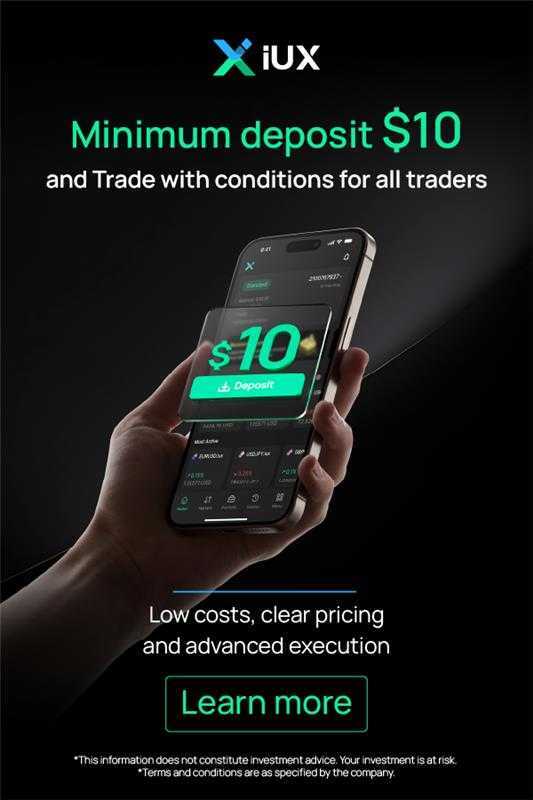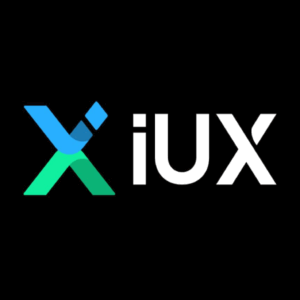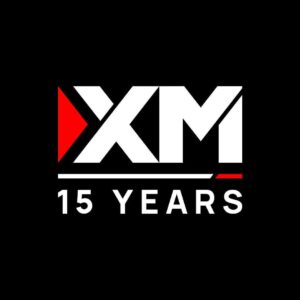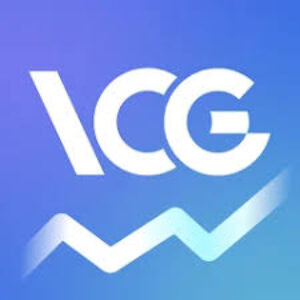
MintCFD Broker Review: Is it Safe?
MintCFD Overviews
MintCFD is a multi-asset CFD trading platform offering zero-commission trades across forex, stocks, indices, commodities, and crypto, with leverage up to 200×.
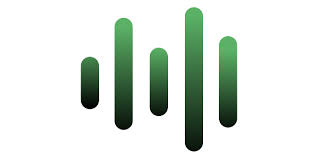
MintCFD is an online CFD and trading provider offering access to global financial markets through a web-based trading platform and mobile app. Founded in 2022 and headquartered in Saint Vincent and the Grenadines, aims to simplify market access for retail traders by offering intuitive tools, fast execution, and a wide range of tradable assets.
The broker promotes accessibility with an account opening process that requires a minimum deposit of just $250, catering primarily to retail clients. Users can trade across , stocks, indices, commodities, and cryptocurrencies—all from a single dashboard.
emphasizes flexibility through its high leverage offerings (up to 1:400) and tiered account structure, allowing traders to scale their accounts based on experience and capital. The broker’s WebTrader is browser-based and requires no software installation, providing instant access to markets with real-time quotes and basic analytical tools.
Although is not currently regulated by major financial authorities, the company claims to adhere to strong client fund protection policies, including segregated accounts and data encryption. The platform has gained attention among emerging brokers for its modern interface and variety of instruments, but traders are encouraged to weigh regulatory considerations before funding accounts.
Overall, provides an accessible trading experience for users seeking diverse instruments and an easy-to-use platform, though it lacks the robust oversight found in more established brokers.
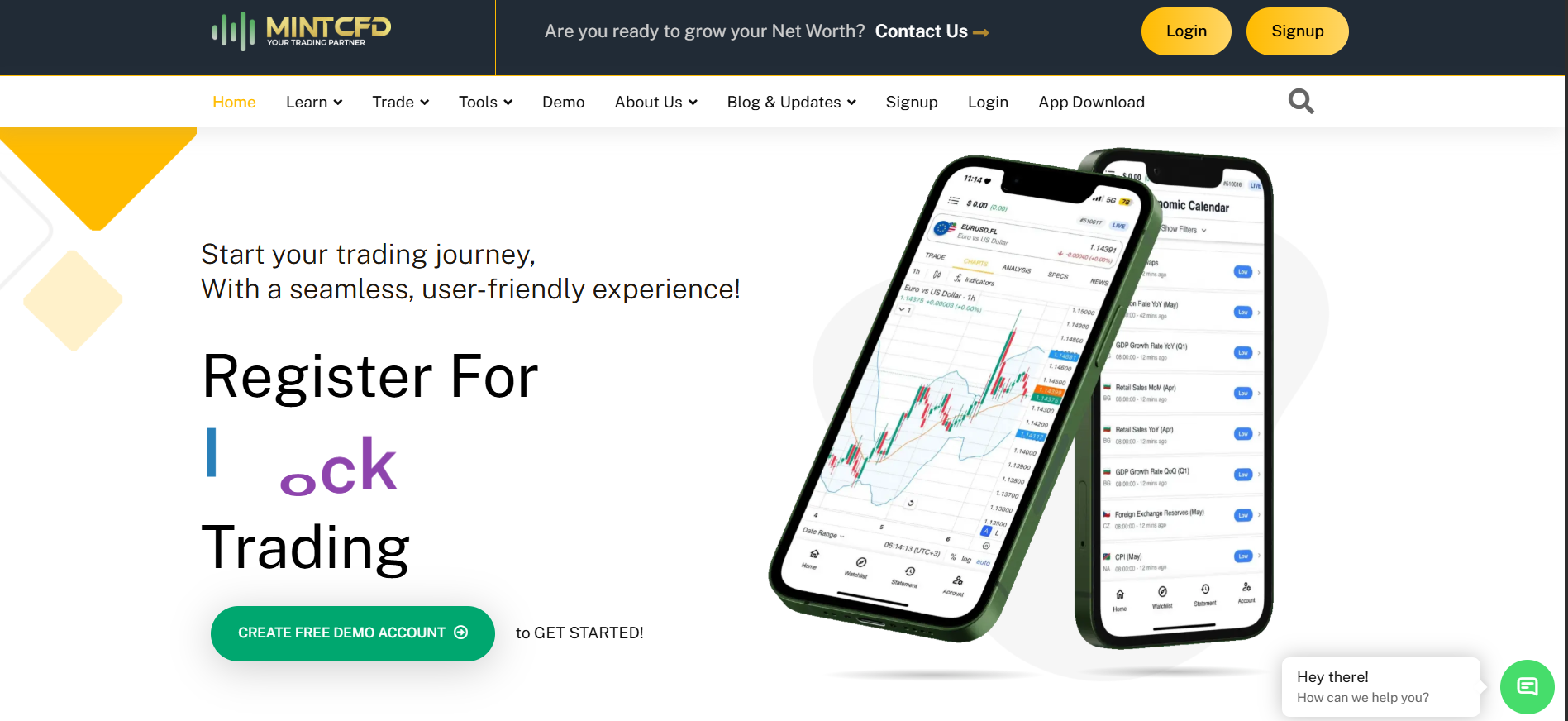
Pros and Cons
- Wide range of tradable assets
- User-friendly WebTrader and mobile platform
- High leverage (up to 1:400)
- Multiple account types to suit traders’ needs
- Accepts cryptocurrency deposits
- Not regulated by any major authority
- Limited educational content
- No integration with third-party trading tools like MT4/MT5
- Limited transparency on spreads and fees
- Restricted availability in certain countries
Is MintCFD Safe? Broker Regulations
MintCFD operates under MintCFD Ltd., a company registered in Saint Vincent and the Grenadines. While this jurisdiction allows online trading businesses to register easily, it does not provide regulatory oversight comparable to financial authorities like the FCA, ASIC, or CySEC.
As a result, MintCFD is considered an unregulated broker, which introduces additional risk. However, the company claims to maintain internal policies to protect clients’ data and funds. This includes segregating client funds from operational capital and using SSL encryption for secure communication.
The broker also enforces standard KYC (Know Your Customer) and AML (Anti-Money Laundering) procedures during account setup and withdrawals, which enhances transactional safety.
Despite these measures, traders should remain cautious when dealing with unregulated brokers and limit their exposure. The absence of external supervision means there’s no formal body to handle disputes or guarantee compensation in case of insolvency.
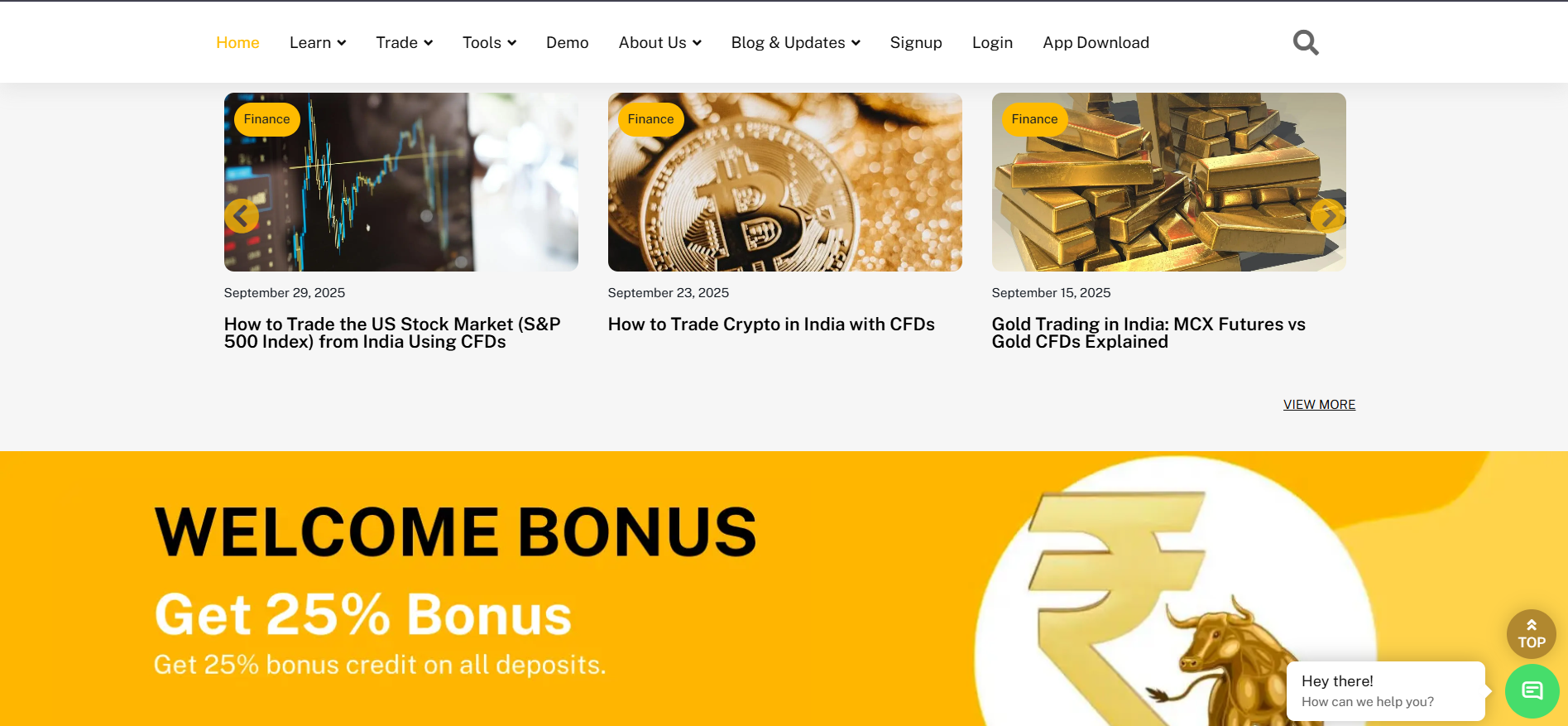
How to Trade with MintCFD?
Trade Assets
MintCFD offers access to a range of asset classes via its CFD (contract for difference) model. According to the broker’s site and description:
-
Forex / Currency Pairs: Major, minor, and exotic currency pairs are available.
-
Commodities: Precious metals (e.g. gold, silver), energy (e.g. crude oil) are tradeable.
-
Indices: Global indices (S&P, Nasdaq, US30, etc.) are supported.
-
Equities / Stocks: CFD on U.S. and Indian stocks via their platform.
-
Cryptocurrencies: Leading crypto assets (e.g. BTC, ETH) via CFD trading.
Notably, MintCFD markets itself as a zero-brokerage platform, meaning they claim not to levy brokerage commission per trade, only make revenue via spread or margin costs.
They also promote “tight spreads” and “fast execution” as selling points.
One aspect to note: the platform’s new version, MintCFD Trader, supports trading across NSE (Indian markets) along with global assets, combining Indian and international instruments in one place.
A caveat: Some of MintCFD’s claims may be promotional. Third-party reviews note that some users have encountered issues with slippage, order execution, or nontransparent pricing.
In summary: MintCFD presents itself as a multi-asset CFD provider covering forex, commodities, indices, stocks, and cryptocurrencies, with no commission trading and a unified interface. However, actual execution, spreads, and asset availability should be verified carefully before placing large trades.
How To Trade?
Below is a typical step-by-step trading workflow on MintCFD, based on information from the broker:
-
Log in to the Platform
After account creation and verification, you log into the MintCFD WebTrader or the MintCFD mobile app / MintCFD Trader app. -
Fund Your Account
Deposit funds into your trading account using one of the supported payment methods (credit/debit card, bank transfer, crypto). Wait for the deposit to clear (times vary). -
Select an Asset / Market
Browse or search the instrument you want (e.g. EUR/USD, Gold, Apple stock). -
Choose Order Type & Size
Select order type (market order, limit order, stop loss, possibly OCO depending on platform features). Input trade size, leverage (within allowed limits), set stop loss & take profit if desired. -
Submit the Trade
Execute the order. You’ll see your position open, with real-time updates on P&L (profit / loss), margin usage, and additional metrics. -
Monitor and Modify
You can modify or close the position as market moves. Use platform tools (cancel, alter stop, etc.). -
Close the Trade / Settle
Close the position manually or let it hit your stop/take profit. P&L is settled, and profits or losses adjust your equity.
Tools and Features to Enhance Trading
-
Charts & Indicators: The mobile app and web platform provide built-in technical indicators (e.g. RSI, MACD, Bollinger Bands), drawing tools, multiple timeframes.
-
Alerts & Watchlists: Users can set price alerts, track favored instruments.
-
Real-Time Market Data & News Feed: Live quotes, news, and analysis integrated in the platform.
-
Order Execution Options: Market, limit, stop, OCO (on some platforms) are mentioned in the mobile app specs.
-
Demo / Practice Mode: MintCFD allows users to practice with demo accounts before trading real money.
Trader styles from intraday, swing, to longer-term positions are supported, though CFD nature implies a more active trading approach. The features are reasonably well suited to both beginners and moderately advanced traders—but high volatility, slippage, or execution delays must be expected.
How Can I Open MintCFD Account? A Simple Tutorial
Here is a detailed walkthrough for opening a trading account with MintCFD (based on the information available).
Step 1: Registration / Sign-Up
-
Visit the MintCFD website and click Sign Up / Register.
-
Provide required personal details: full name, email or mobile number, country of residence, and password.
-
You may need to verify your email or phone number via OTP or verification link.
-
If migrating to MintCFD Trader, existing clients must register a new account on the new platform.
Step 2: Identity Verification (KYC)
-
Submit proof of identity (government ID: passport, driver’s license, national ID).
-
Submit proof of address (utility bill, bank statement) dated within a recent period.
-
The broker processes these documents and performs AML / KYC checks.
The verification timeline is not explicitly stated on their website, but typically this kind of review might take from a few hours to 1–2 business days.
Step 3: Account Activation & Deposit
-
Once your identity is verified, your account becomes active.
-
You can then choose your preferred deposit method (credit/debit card, bank wire, cryptocurrency) and fund your account.
-
The minimum deposit requirement is relatively modest—claims suggest lowest deposit starting at US $250 (or equivalent) to begin trading.
Step 4: Choosing an Account Type
-
After funding, you may choose one of the account tiers (Standard, Silver, Gold, Platinum, VIP) — each with differing benefits such as spreads, leverage, extra services.
-
Eligibility criteria (minimum balance, trading volume, experience) may apply for higher tiers. (see “Account Types” section below)
Step 5: Start Trading or Demo Mode
-
If new to trading, you may begin on a demo account to practice with virtual funds. MintCFD offers a demo environment.
-
Otherwise, you can begin placing live trades directly.
Step 6: Withdrawal (When Desired)
-
After accumulating profits or closing positions, you can request withdrawal to your linked payment method (bank, card, crypto).
-
You may need to pass a final identity check or anti-fraud checks before withdrawal is approved.
Notes & Caveats
-
Bonus & Credit Policies: MintCFD offers promotional credit or bonus on deposits (e.g. 25% deposit bonus, migration bonus). However, any withdrawal request will remove all bonus credits.
-
Bonus Expiry: Bonus credits may expire (e.g. 60 days).
-
Migration Impact: On migrating to MintCFD Trader, prior trade history and open positions on the older platform will not transfer. You’ll need to close those before migration.
Due to the nature of CFD providers especially when unregulated, always start with small initial deposit to test execution, withdrawal responsiveness, and customer support before scaling up.
MintCFD Charts and Analysis
MintCFD incorporates integrated charting and analytical tools within its platform (web and mobile) to support technical analysis and trading decisions. Key features include:
-
Built-in Technical Indicators: Users get access to standard indicators such as RSI, MACD, Bollinger Bands, VWAP, among others.
-
Drawing Tools & Multi-Timeframes: The platform allows zooming into multiple timeframes and using drawing overlays (trendlines, support/resistance, channels).
-
Chart Templates: Users may save and reuse chart setups.
-
Alerts & Price Notifications: You can set alerts (price, volatility, margin calls) to notify you when certain thresholds are met.
-
Real-Time Updates: Charts are fed with real-time market data to reflect live quote changes.
From a usability standpoint:
-
Beginners will find the chart interface accessible: a few indicators, simple layouts, ability to set stop loss/take profit directly from chart.
-
Intermediate / Technical Traders can benefit from customizing indicator combinations, multiple timeframes, drawing overlays, and alerting tools.
-
Active / Intraday Traders may find performance dependent on latency, chart refresh speed, and ability to quickly place/modify trades from chart view.
However, third-party reviews and user feedback point out that during high volatility, some traders experienced slippage, order rejections, or execution delays, which may be exacerbated if charts lag or trade inputs are delayed.
In short: MintCFD’s charting and analytics are solidly built for the average trader, but serious or high-frequency traders should test the responsiveness and execution reliability before relying fully on the platform.
MintCFD Account Types
Below is a representation of MintCFD’s account tiers and their typical features (based on broker site and public descriptions). Because precise specs are not fully published, the table contains best-available approximations and notes on eligibility or differences.
| Account Type | Minimum Deposit / Balance | Leverage / Margin | Spread / Commission | Additional Features / Benefits | Eligibility / Notes |
|---|---|---|---|---|---|
| Standard | ~$250 | Up to 1:200 / 1:400 (depending on platform) | Standard spreads, commission-free (no brokerage) | Basic platform access, real-time quotes, alerts, charts | Entry level for most traders |
| Silver | Moderate (higher than Standard) | Similar or slightly better leverage | Slightly tighter spreads | Access to more instruments, priority support | Based on deposit or trading volume |
| Gold | Higher deposit / turnover requirement | Better margin terms | Tighter spreads | Market insights, reduced cost, higher leverage | Requires consistent trading |
| Platinum | High capital threshold | More favorable leverage / margin | Best spreads | Premium tools, account manager, faster withdrawal priority | Experienced/trading volume needed |
| VIP | Invite or highest deposit tier | Custom leverage | Very tight spreads, lowest costs | Dedicated support, special promotions, premium features | Reserved for top volume / clients |
Notes & Caveats:
-
MintCFD’s site does not always publish full details for each tier; hence, some features listed above are inferred from promotional descriptions.
-
The leverage “up to” value differs between older platform and the new MintCFD Trader (where they cite up to 1:200).
-
All accounts appear to enjoy zero brokerage (i.e. no commission) model; revenue comes via spreads.
-
Upgrades to higher tiers may depend on account balance, trading volume, or other criteria set by MintCFD internally.
Because the publicly disclosed details are limited, prospective users should request full account specification sheets from MintCFD before committing funds.
Do I Have Negative Balance Protection with This Broker?
Negative Balance Protection (NBP) is a feature some brokers offer to prevent traders from losing more money than their account balance (i.e. you can’t go into a negative balance). This is a strong risk management safeguard.
What MintCFD states
MintCFD claims that “automatic negative balance protection” is available in their mobile app. This suggests that under certain conditions, if market moves sharply against you, your losses will be capped at zero rather than pushing your equity into negative territory.
However, this claim appears only in marketing copy and is not clearly described in detailed policy or terms and conditions accessible publicly. As is common in less regulated platforms, promotional statements like this may come with hidden caveats or restrictions.
What Are the Conditions / Limitations
Because full formal policy is not publicly available, we can only note common caveats that apply (and that users should seek clarification on):
-
Only on retail accounts: Some brokers restrict NBP to retail clients and exclude professional accounts.
-
Platform / instrument dependent: The protection might not apply to all asset classes (especially volatile instruments or crypto CFDs).
-
Exclusion under extreme conditions: In extreme market gaps or liquidity issues, the broker may exclude NBP or invoke disclaimers.
-
Bonus / credit impact: Use of bonus or credit funds may disqualify you from NBP.
-
Withdrawal or margin triggers: If the margin falls below threshold or withdrawal is requested, bonus or protection conditions may be invalidated.
Impact on Trader Risk Management
If genuine and reliable, negative balance protection is a valuable safeguard for retail traders, particularly in volatile or leveraged trades. It ensures one cannot lose more than the capital invested (i.e. no debt to broker). For newer traders especially, this safety net reduces downside risk and builds confidence.
However, in the absence of independently verifiable policy or regulatory enforcement, the existence of NBP in MintCFD should be treated cautiously. If the broker fails or becomes insolvent, or refuses to honor the protection claims, traders may face losses beyond what’s advertised.
Summary
-
MintCFD asserts that negative balance protection is available in their app.
-
There is no publicly detailed legal guarantee or clause specifying exactly how NBP functions (for which accounts, when, or with what exclusions).
-
Traders should verify, via support or policy documents, whether their account is eligible, under what conditions NBP is valid, and whether any exceptions apply.
-
Given that MintCFD is unregulated, even NBP claims may not be enforceable externally—so always trade with prudent risk management.
MintCFD Deposits and Withdrawals
Deposit Methods
MintCFD supports a variety of deposit methods (from their promotional materials and app descriptions):
-
Credit / Debit Cards: Visa, MasterCard, etc.
-
Bank Wire / Bank Transfer
-
Cryptocurrency Deposits: For certain accounts or regions, crypto may be accepted.
-
In-App Instant Deposits: The mobile app claims to allow instantaneous in-app funding.
They also promote 0% brokerage / zero hidden charges and “no hidden fees” on deposits.
Withdrawal Methods
Withdrawals are permitted to matching accounts (i.e. the same method used to deposit, where feasible). The app mentions “instant withdrawals to your linked bank account.”
However, actual withdrawal times in practice may vary (often 24–72 hours or longer, depending on verification, bank processing, or internal checks).
Limits, Fees & Processing Times
-
Minimum / Maximum Withdrawal: The broker website does not publicly list clear limits for withdrawal amounts, making this an area one should request specifically.
-
Fees: MintCFD’s promotional claims emphasize no hidden charges, but actual withdrawal fees (bank charges, processing fees) may apply depending on currency conversion, intermediary banks, or crypto network fees. Always confirm before withdrawing.
-
Processing Time: While the app states “instant withdrawals,” realistic timing typically depends on internal review and third-party banking processes; delays are often reported in user reviews.
-
Verification / Compliance Checks: Prior to withdrawal, the broker may require identity checks, documentation checks, or anti-fraud review, which can delay processing.
Risks & Reported Issues
Several third-party review platforms and user reports point out withdrawal issues as a common complaint. Some users report delays, unresponsiveness from support, or inability to access funds.
Given that MintCFD is not regulated by major authorities, there is no guarantee an external ombudsman or regulator will enforce prompt withdrawals.
Tips for Users
-
Always begin with a small test withdrawal to verify responsiveness before moving large capital.
-
Keep all identity and address verification documents ready to expedite approval.
-
Match withdrawal methods to deposit methods when possible (to avoid cross-method complications).
-
Document all communication with support.
-
Be cautious around bonus offers or credits—some brokers void bonuses upon withdrawal, which MintCFD also explicitly states (i.e. withdrawing funds will cancel bonus credits)
In summary: MintCFD presents a range of deposit and withdrawal methods, promotes no hidden charges and quick processing, but user reports and lack of full transparency mean traders should proceed with cautious verification and modest initial amounts.
Support Service for Customer
MintCFD offers multiple channels for customer support, though exact hours and responsiveness are somewhat opaque from their site.
Available Support Channels
-
Live Chat: In-platform chat support is offered.
-
Email Support: Standard support via email is available.
-
Phone Support: Some contact numbers are advertised.
-
In‐App / Platform Messaging: The platform claims to support direct messaging for real-time assistance.
Response Times & Languages
MintCFD’s Trustpilot profile and independent reviews suggest that response times are “fast” in many cases, especially for deposit or withdrawal queries.
However, not all users are satisfied. Some feedback includes delays in support, unresolved disputes, or limited follow-up when accounts run into withdrawal or technical problems.
The languages supported are not clearly stated, but given their presence in India and global marketing, English is assumed. They may also provide support in regional languages depending on client base (though this is speculative).
Strengths & Weaknesses
Strengths
-
Multichannel support (chat, email, phone) provides flexibility.
-
Promotional claims and user reviews indicate relatively responsive service in many cases.
-
In-platform assistance and messaging may ease troubleshooting.
Weaknesses / Concerns
-
Some users report that support becomes unresponsive after large deposits or withdrawal requests.
-
Lack of transparency about support hours (e.g. 24/5 or 24/7)
-
Support quality may degrade in non-peak or complex cases (e.g. escalations, disputes)
As always with an unregulated trading provider, the consistency and reliability of customer support are vital, and past user complaints should be taken seriously as a risk factor.
Prohibited Countries: Where Can I Not Trade with this Broker?
MintCFD’s site does not provide a full, up-to-date list of prohibited or restricted jurisdictions in public view. However, some limitations and clues arise from policy and promotional content.
Known Restrictions & Observations
-
Because MintCFD is unregulated, it is unlikely to operate in countries or territories that require strict regulated oversight (e.g. USA, Canada, UK, EU in many cases).
-
Some review sites and WikiFX references list “lack of regulation” and “suspicious licensing” as red flags particularly for users in heavily regulated regions.
-
Users from certain countries may find that the platform is not accessible or that services are restricted due to regulatory constraints.
Why Some Countries Are Prohibited
-
Regulatory constraints: Many jurisdictions require brokers to hold licenses and adhere to local financial laws; unlicensed brokers often cannot legally solicit business there.
-
KYC / AML / Banking restrictions: Some countries have stringent banking or crypto rules, making it impractical to serve clients.
-
Risk & compliance concerns: Brokers may voluntarily exclude high-risk or enforcement jurisdictions to limit regulatory exposure.
What Users Should Do
-
Before signing up, check if your country is accepted or explicitly excluded during registration.
-
Read the broker’s terms and conditions or disclosures for “Restricted Jurisdictions” clause.
-
Ask support if your country is permitted, and whether there are restrictions (e.g. limited leverage, fewer instruments).
Likely Prohibited Jurisdictions (based on norms)
While not confirmed by MintCFD itself, many CFD brokers exclude the following:
-
United States
-
Canada
-
United Kingdom
-
European Union (or restrict EU clients via proxy)
-
Some Middle Eastern or sanctioned countries
-
Some smaller jurisdictions with strict financial oversight
In sum: Because MintCFD lacks a clear public list, prospective users must confirm eligibility before registration. If your country is known for strict financial regulation, proceed cautiously and expect possible exclusion or limitations.
Special Offers for Customers
MintCFD advertises a variety of promotions, bonuses, and incentives to attract and retain traders. However, bonus policies often come with stringent terms and conditions, so they must be read carefully.
Current / Past Offers
-
Deposit Bonus: MintCFD is offering a 25% extra credit on new deposits (valid until 31 July 2025).
-
Migration Bonus: For existing clients migrating from the old platform (my.mintcfd.com) to MintCFD Trader, a 25% bonus credit is given on transferred funds.
-
Referral / First-time promotions: Some press sources mention 5% first-time deposit offers or referral incentives, though these are less clearly documented on the official site.
Terms & Conditions & Limitations
-
Any withdrawal request, even of a small amount (like ₹100), will remove all bonus credits from your account.
-
Bonus credits expire after a defined period (e.g. 60 days) if not fully utilized.
-
If account equity falls below bonus credit, the bonus is removed and open positions may be closed (stop-out).
-
These bonuses are discretionary and subject to MintCFD’s approval.
-
There is often a trade volume or turnover requirement before bonus profits can be withdrawn, though explicit numbers are not publicly published (a common practice in CFD bonus offers).
Pros & Risks of Offers
Pros
-
Bonuses can boost initial capital, allowing a larger trading position (if conditions are favorable).
-
Encourages migration of existing clients to new platform.
-
Referral incentives can reward bringing in new users.
Risks / Downsides
-
Clearing volume requirements might be high, making actual withdrawal of bonus profits difficult.
-
Loss of all bonus on any withdrawal discourages partial withdrawals.
-
Some users may find bonuses more of a marketing lure than genuine benefit—especially if conditions are opaque.
-
Because MintCFD is unregulated, these offers are not legally enforceable in a regulated oversight sense.
Recommendation
If you opt for a bonus, treat it cautiously. Always read the fine print, calculate realistic trade volume requirements, and ensure you understand when and how bonus credit is removed. Begin with modest amounts so that you are not heavily tied to bonus rules that limit flexible withdrawal.
MintCFD Review Conclusion
From the analysis above, MintCFD presents both compelling opportunities and significant risks. Below is a balanced assessment of its features, reputation, strengths, and weaknesses, followed by suggested fit for different trader types.
Strengths & What Works Well
-
Multi-Asset Access: MintCFD offers a range of instruments—forex, commodities, indices, stocks, and crypto—within a unified CFD interface, appealing to traders who want diversity.
-
User-Friendly Platform: Its WebTrader and mobile apps (and the new MintCFD Trader app) are designed for accessibility, offering built-in charts, indicators, alerts, and ease of navigation.
-
Zero Brokerage Model: The promise of commission-free trading on many instruments is attractive, reducing upfront trade cost.
-
Low Minimum Deposit: A modest entry threshold makes MintCFD accessible to more retail traders.
-
Promotional Incentives: Bonuses and migration credits may provide extra initial funding (though with caveats).
-
Responsive for Simple Queries: Some users report quick responses for basic deposit/withdrawal and setup issues.
Weaknesses & Concerns
-
Lack of Regulation: MintCFD operates without oversight by major recognized financial regulators. This is arguably the most serious risk factor.
-
Trust & Credibility Issues: Scam-advisory sites and independent reviewers have flagged low trust scores, domain transparency issues, and allegations of questionable practices.
-
Withdrawal & Support Complaints: Several user reports recount delays, nonresponsive support, or difficulty accessing funds.
-
Opaque Terms: Detailed cost schedules, spread breakdowns, account tier requirements, and bonus terms are not fully disclosed publicly.
-
Bonus Restrictions: Removal of bonus upon withdrawal and other restrictive policies may reduce flexibility.
-
Execution / Slippage Issues: Some traders mention slippage, trade rejections, or price differences during volatile periods.
Overall Reputation & Usability
While MintCFD markets itself as an accessible, zero-commission, multi-asset trading solution, in reality it sits in a risky space of unregulated CFD providers. Its usability and interface may be slick and functional, but the lack of regulatory oversight, the warnings from objective third parties, and user complaints mean that the reputation is mixed at best.
For some traders, MintCFD might function acceptably as a small-stakes, experimental platform, particularly if they want access to multiple asset classes via a single interface. But it is not suitable for those who prioritize safety, regulatory protection, or institutional-grade standards.
Which Traders Might It Suit?
-
Beginner / Testing Traders: Could use it to explore markets, test strategies, or get familiar with CFD mechanisms (with only limited capital).
-
Traders in Nonregulated Regions: If regulated brokers are unavailable or restrictive in your country, you might consider MintCFD—but with extreme caution.
-
Experienced / Institutional Traders: Likely bypass it in favor of regulated peers that offer audited systems, transparent pricing, and stronger fund protections.
Summary and Key Takeaways
MintCFD should be viewed as a higher-risk, potentially high-reward trading option. Its strengths in platform accessibility, asset range, and promotional incentives are overshadowed by serious questions around legitimacy, fund security, and support reliability. If you choose to use it, do so cautiously—start with small amounts, thoroughly test deposit/withdrawal flow, and maintain clear records of all transactions and communications. Always keep in mind that the safety net in such an environment largely depends on the broker itself, not on external regulatory protections.
- Multi-asset CFD offering: MintCFD allows trading forex, commodities, indices, stocks, and cryptocurrencies in one platform.
- User-friendly platform: WebTrader and mobile apps offer built-in charts, indicators, alerts, and a smooth interface.
- Zero brokerage commission and tight spreads are marketed as core advantages.
- Low barrier to entry: Minimum deposit is modest (~US $250) for many account tiers.
- Bonus offers (deposit bonus, migration bonus) exist, but are tightly conditioned; any withdrawal may forfeit the bonus.
- Negative balance protection is claimed in the app but lacks a fully disclosed legal guarantee.
- Deposit and withdrawals support multiple methods; claimed “instant withdrawals,” but user experiences show potential delays or issues.
- Customer support offers live chat, email, phone, and in-platform messaging; its quality is mixed in user reviews.
- Major risk: lack of regulation. MintCFD is unregulated, creating a high-risk environment for traders.
- Reported issues: withdrawal delays, support complications, execution slippage, opaque terms.
- Best suited for users who proceed with caution and use limited funds; not ideal for those who prioritize regulated security and institutional transparency.
FAQs
What is MintCFD and how does it operate?
Is MintCFD regulated and safe to use?
What markets and instruments can I trade on MintCFD?
How do I deposit and withdraw funds on MintCFD?
What are the risks and drawbacks of using MintCFD?
About Author
Robert J. Williams
Robert J. Williams, a finance graduate from the London School of Economics, dove into finance clubs during her studies, honing her skills in portfolio management and risk analysis. With a career spanning prestigious firms like Barclays and HSBC, she's become an authority in asset allocation and investment strategy, known for her insightful reports.
- MintCFD Overviews
- Pros and Cons
- Is MintCFD Safe? Broker Regulations
- How to Trade with MintCFD?
- Trade Assets
- How To Trade?
- How Can I Open MintCFD Account? A Simple Tutorial
- MintCFD Charts and Analysis
- MintCFD Account Types
- Do I Have Negative Balance Protection with This Broker?
- MintCFD Deposits and Withdrawals
- Support Service for Customer
- Prohibited Countries: Where Can I Not Trade with this Broker?
- Special Offers for Customers
- MintCFD Review Conclusion
- Summary and Key Takeaways
- FAQs
- About Author
